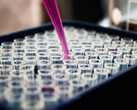Several companies are currently working on wrist-based blood glucose measurement. We discuss the background and the challenges of such a measurement in a previous article. Now, a new patent (patent number 20250134464) from Garmin has been made public, which describes a way of measuring blood glucose levels - or at least the measuring of a value used to denote blood glucose.
Specifically, the patent refers to HbA1c, which is otherwise known as long-term blood glucose and provides information about the blood glucose level over several weeks. The determination of HbA1c is necessary for health insurance in a number of countries, at least for type 1 diabetics, and is used to monitor the progress of the disease. In simple terms, the HbA1c value measures the red blood cells that have entered into a particular kind of chemical reaction with glucose that is no longer reversible. An important aspect to keep in mind is that the HbA1c value cannot be used to provide instantaneous measurements of blood glucose, but it is at least possible to estimate it using CGM systems, which measure the blood glucose level optically.
Ultimately, the patent describes pressure compensation in conjunction with a technique called pulse spectrometry. The term "spectrometry" indicates that an entire spectrum, i.e., the interaction between matter and radiation over a certain range of electromagnetic radiation, is recorded and not just one or individual wavelengths, as is the case when measuring heart rate or blood oxygen saturation. The measurement of the HbA1c value may in principle be easier due to its particular progression, so comparatively complex NIR sensors may be necessary for the direct measurement of blood glucose levels. As always, it remains to be seen whether the patent will actually result in a product.































